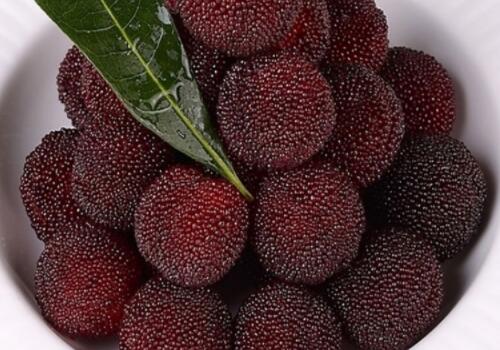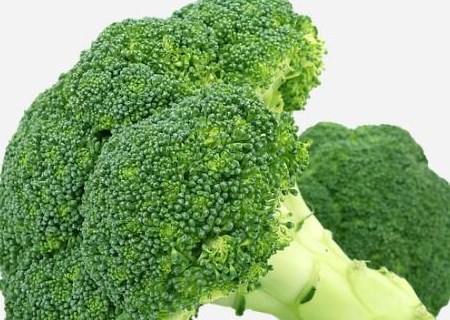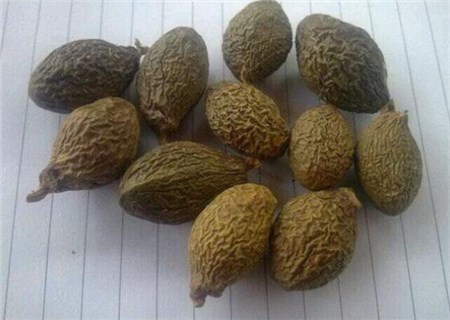Is the late-maturing variety Dongkui red bayberry delicious? How much is the sapling price? When will it be planted? Cultivation techniques
Dongkui Myrica belongs to the phylum of angiosperm, Myricaceae. Belongs to the big fruit late ripening variety. The tree of this variety is strong, upright and tall in crown. Is Dongkui red bayberry delicious? How much is the sapling price? When will it be planted? What are the cultivation techniques? Learned from Zhejiang seedling base, Dongkui bayberry seedlings 2-3 yuan (1-year-old seedlings), 5-30 yuan (2-3-year-old seedlings), black carbon bayberry seedlings 2-3 yuan (1-year seedlings), 5-30 yuan (2-3-year-old seedlings), 5-30 yuan (2-3-year seedlings).

Is Dongkui red bayberry delicious?
Dongkui bayberry is delicious.
1. Dongkui bayberry has big fruit and good taste, and wins awards year after year. It won the "Gold Award for High quality Agricultural products of Zhejiang Province" in 1998 and the famous brand products of (Beijing) International Agricultural Expo in 1999, and has since become a hot product in the market.
2. The fruit began to mature at the beginning of July. It was introduced by Xiajiang County, Jiangxi Province in the 1990s. At present, the mature period of Xiajiang bayberry Dongkui is from late June to early July. Its fruit is as large as table tennis, with an average vertical and horizontal diameter (diameter) of 3.66cm-3.73cm, a single fruit weight of 22-25g, the largest fruit weight of 50g, only 20 per 500g Dongkui bayberry, at least 12, the average meat column length 1.15cm, thick meat, strong flavor, juicy, edible rate of 94.8%. The ripening period is not easy to drop fruit, and the harvest time is as long as 10-15 days, which is more resistant to storage and transportation, and the fruit is both fresh and canned. Its 16 grafted progenies are more than 100 years old. In 1979, Zhejiang Agricultural University named it "Dongkui" when compiling the introduction to Fruit Tree cultivation, and listed it as a separate variety.
3. Dongkui red bayberry is in great demand (it can also be exported to Southeast Asia) and the price is high (the local price is about 25 yuan / kg per year, which is 5 times more expensive than ordinary red bayberry). Therefore, the cultivation of Dongkui red bayberry is of positive significance to the development of mountain resources, greening barren mountains, soil and water conservation and increasing mountain economic income.
When will Dongkui bayberry be planted?
Dongkui bayberry can be planted in autumn and winter, and it is the best from late February to mid-March. The planting holes are about 80 cm in length and width and 60 cm in depth. 50-100 kg of compost or 30 kg of poultry manure, or 5 kg of vegetable cake and bean cake are applied to each hole, and 30-35 plants are planted per mu. After planting, do a good job of setting the stem, that is, cut short the full buds above 25-30 cm on the trunk.
What are the cultivation techniques of Dongkui bayberry?
I. Land selection
Choose thick soil, loose texture, slightly acidic, red loam or black loam, suitable for Dongkui red bayberry growth slope or gentle slope, open into terraces, trenches or fish scale pit planting. The width of the terrace, according to the growth needs of Dongkui bayberry, is generally 4ml 6 meters, with a steep slope. If there are difficulties in excavating terraces, fish scale pits can be excavated for planting.
2. Planting
1. Planting period: spring planting and autumn planting. Spring planting is from early February to late March and autumn planting is from early October to early November. Spring planting is generally the main method.
2. Hole digging and backfilling: the pond is dug 1-2 months before planting, and the length, width and depth of the pond are all 80 cm. When backfilling, each pond is applied with mature farm manure 15 minutes, phosphate fertilizer 1 kilogram as base fertilizer, mature soil at the bottom, raw soil at the top, and then to be planted.
3. Planting density: planting 30murs and 45 plants per mu, the row spacing is 5mur7m, and the plant spacing is 4mur5m. It can also be closely planted with young trees to obtain higher economic benefits in advance, and then transplanted later, so that 60 trees per mu can be planted.
4. Deep planting and soil mulching: because the scion can take root by itself, instead of the root of the rootstock, the seedling should be deeply planted to the part with leaves (that is, the main stem and the leafless part of the lower end of the main branch are buried in the soil), which can reduce sun exposure and improve the survival rate of planting. After the seedlings are put into the planting pond, the roots are stretched around, covered with soil, then pressed with their feet, and then covered with loose soil, so that there are 5 leaves at the lower end of the main branch.
5. Configure pollination trees: red bayberry is a dioecious plant. 0.1% of the male trees of 1% of Myrica rubra should be used as pollination trees when establishing the garden.
III. Management
1. Shading cover: the root system of newly planted Dongkui red bayberry was underdeveloped and was easy to die in the sun, so it should be covered with shading net or branches during the period of high temperature and hot sun from July to September, and the shade should be removed after October.
2. Shaping and pruning: the shaping of young trees can be cultivated into a natural open crown with one stem and three main branches. After planting, 4 branches with strong growth and uniform azimuth distribution were selected as the main branches, the distance between the main branches was 15 ~ 20 cm, and the opening angle was 45 °- 60 °. After planting, the trunk was cut short at a height of 60 cm, followed by 4 branches with strong growth and uniform azimuth distribution. The over-long branches should be coring or breaking, and the dense, weak and over-prosperous branches should be thinned properly to ensure that the tree has a solid skeleton, distinct subordinate, balanced growth and strong branches, which is conducive to the formation of lateral branches. After entering the fruiting period, it is appropriate to cut lightly, not to cut heavily, and to cut off withered branches, disease and insect branches, weak branches and long branches, while the weak fruiting branches can be retracted and renewed. The general requirement is that the branches around the upper and lower parts of the crown should be evenly distributed, ventilated and transparent. Specifically, the upper branches should be thin, the lower branches should be tight, and the fruiting branches of the main branches and secondary branches should be short in the upper part and thick in the lower part, so as to make the inside and outside shoots strong and the green leaf layer thick. Pay attention to fruit thinning in the initial fruit.
3. To improve soil quality and high yield, fertilizer must be properly increased, mainly organic fertilizer, followed by potash fertilizer, and phosphate fertilizer should be controlled. Young trees should pay attention to soil improvement, perennial appropriate ploughing and deep ploughing, removal of miscellaneous roots and weeds around the crown. With the increase of the crown, the holes were enlarged and turned deeply year by year, and barnyard manure and plant ash were applied to cultivate soil fertility and promote the development of mycorrhiza. Within 2 years of planting, before shoot germination in spring, summer and autumn, topdressing was applied once, each plant was about 2 kg of animal feces and urine or 0.1 kg of urea, 0.2 kg of potash fertilizer was added and poured with water, but urea and potash fertilizer should be applied separately. The fruit trees put into production should be fertilized twice a year, that is, once after fruit harvest and before sprouting in spring. If possible, one more available fertilizer can be applied in the young fruit stage. according to the standard of high-yielding trees, the amount of fertilizer applied in the whole year is: barnyard manure 50 kg, plant ash 30 kg 40 kg, phosphate fertilizer not more than 0.3 kg. Fertilization after fruit harvest is particularly important to restore tree potential, facilitate flower bud differentiation, and provide conditions for high yield and high quality in the following year. The amount of fertilizer applied this time should account for 60% of the whole year, and spring fertilizer accounts for about 40%.
4. Pest control: (1) Brown spot: reddish-brown spots occur on leaves, forming a large number of fallen leaves, which can be sprayed with 1000 times of 70% methyl topiramate or 50% carbendazim at the initial stage of shoot germination in spring and summer. (2) Spodoptera litura: it occurs from May to August and can be controlled with 1000 times of 50% fenitrothion or 4000 times of fenvalerate. (3) debt evading insects and oyster scale can be controlled with 40% omethoate 1000 times or 40% speed killing 1500 times.
Time: 2019-03-17 Click:
- Prev

What are the seed planting methods of broccoli (also called broccoli)? What are the planting prospects? How much money can you earn per mu?
Broccoli, broccoli, commonly known as broccoli. It's a common vegetable. Commonly known as cauliflower, biennial herbs. It originated in Italy and has a wide range of branches in China. So do you know the seed planting methods of broccoli? What are the planting prospects? How much money can you earn per mu?
- Next

What are the methods of planting fat sea seeds? What is the effect and effect? Can I drink it for a long time?
Fat sea is mostly used to make tea, which can lower blood pressure, moisten the throat and resolve phlegm. Produced in Southeast Asian countries, China's Guangdong, Hainan, Guangxi, Yunnan and other provinces have been introduced and cultivated. So do you know what are the methods of planting fat sea seeds? What is the effect and effect? Can you drink it for a long time?
Related
- Fuxing push coffee new agricultural production and marketing class: lack of small-scale processing plants
- Jujube rice field leisure farm deep ploughing Yilan for five years to create a space for organic food and play
- Nongyu Farm-A trial of organic papaya for brave women with advanced technology
- Four points for attention in the prevention and control of diseases and insect pests of edible fungi
- How to add nutrient solution to Edible Fungi
- Is there any good way to control edible fungus mites?
- Open Inoculation Technology of Edible Fungi
- Is there any clever way to use fertilizer for edible fungus in winter?
- What agents are used to kill the pathogens of edible fungi in the mushroom shed?
- Rapid drying of Edible Fungi

